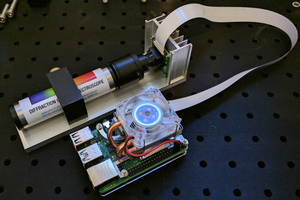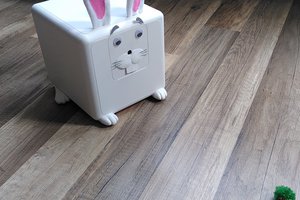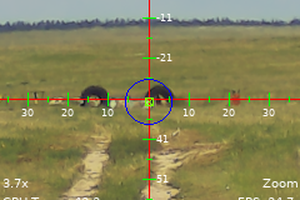Dimensions:
- Length: 13cm
- Width: 10cm
- Height: 11cm
- Weight: 0.65kg
Features:
- Low latency h264 streaming with the RPi camera and gstreamer.
- 4WD skid steering with suspension, so it doesn't get stuck on tiny bumps.
- Remote control apps for Linux desktop and Android mobiles.
- On-board WiFi access point, or client mode.
- IMU with accelerometer/gyro/compass.
- High brightness headlights for night-time.
- Front and rear indicator and rear brake/warning lights.
- 4400mAh rechargable battery. Lasts at least a couple of hours.
- Onboard charging controller with in-video status display.
- 100% open source. (Well, except for the Raspberry Pi blobs...)
My design goal was to build a traditional rover with the following properties:
- Make full use of Raspberry Pi video hardware.
- Easy to build. With full instructions that anyone could follow.
- Reproducible. Using widely available commodity parts wherever possible, or else using totally custom parts with full schematics provided.
- Robustness. No exposed circuit boards or loose wires to get snagged on things.
- Portability. It can be thrown in a backpack to take it to places.
- Repairable/Reusable. Avoiding gluing or modifying parts wherever possible so that any part can be removed and replaced, or reused in another project.
I don't think PiRover will change the world, but it might be useful as an educational tool as it could be used as a jumping-off point for a lot of different topics: basic electronics, PCB design, laser cutting, embedded Linux, and software development for multiple different platforms. I haven't done a full costing but I think you could build a PiRover for under $150.
Have a look at the build steps below and check the files section for the detailed build instructions in PDF format.
Raw schematics can be found on Github:
Control software:
- Control Server: https://github.com/ali1234/piroverd/
- Desktop Client: https://github.com/ali1234/piroverc/
- Android Client: https://github.com/ali1234/pirovera/
Other useful software:
- Headless shutdown from GPIO: https://github.com/ali1234/systemd-gpio
Software used to design it:
- Leocad for instructions: http://www.leocad.org
- Inkscape for laser cut parts: https://inkscape.org
- Eagle CAD v6 for PCBs - available from Ubuntu repositories.


 Chris Gervang
Chris Gervang
 LesWright
LesWright
 jdelbe
jdelbe
 ouch3994
ouch3994
An awesome combination of open hardware and legos, this is great!!! I made a lego robot but went entirely out of legos except for light sensors hotglued to the bottom and a control board on top. I really like these sort of projects, and yours is very well done!